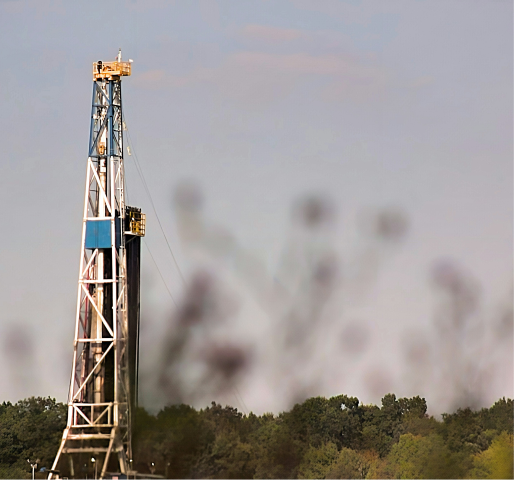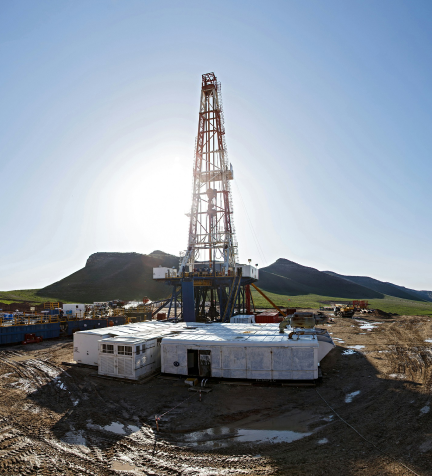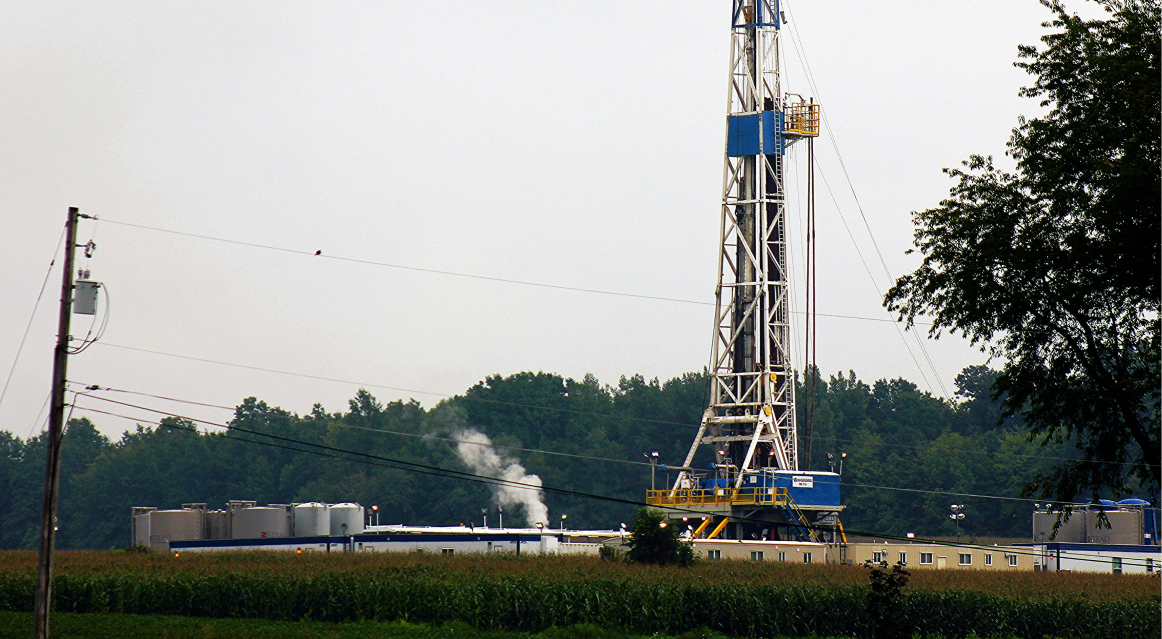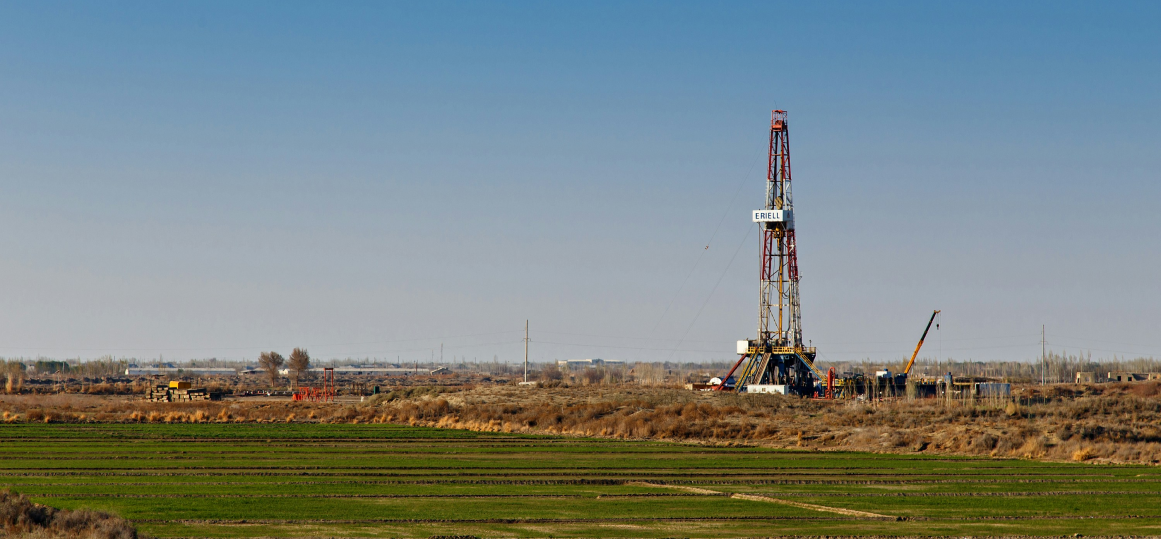Did you know that natural gas is the most used energy source in the world after oil? According to the International Energy Agency, natural gas accounts for 23% of the global energy consumption, and its demand is expected to increase by 45% by 2040. But, where does this gas come from and how is it extracted? One of the most widely used techniques nowadays is hydraulic fracturing, or fracking, which consists of injecting water at high pressure mixed with sand and chemicals into the underground, to break the rock and release the gas trapped inside.
This technique has allowed access to huge reserves of unconventional gas, which were previously inaccessible or uneconomical. However, fracking has also generated a great controversy, due to its possible negative impacts on the environment and human health.
Is fracking a sustainable and safe energy solution, or a threat to the planet and its inhabitants? In this blog, we will explore the risks and benefits of fracking, analyzing its effects on the climate, water, soil, biodiversity, economy and society. Our goal is to offer a balanced and evidence-based vision, that helps us to make informed decisions about the energy future of our world.
Fracturing Hydraulic: How it works and what are its impacts
Fracking Hydraulic is a technique to extract gas and oil from the underground, breaking the rock with water at high pressure and chemicals. The process of fracking is as follows:
- A vertical or horizontal well is drilled, tubed and cemented, to more than 2500 meters deep, with the aim of generating one or several channels of high permeability through the injection of water at high pressure, so that it exceeds the resistance of the rock and opens a controlled fracture at the bottom of the well, desired section of the formation containing the hydrocarbon1.
- A mixture of water, sand and chemical additives is injected at high pressure, to create and enlarge the fractures in the rock.
- The gas or oil is released from the fractures and collected on the surface.

The history of fracking dates back to 1947, when the first experiment was carried out in the United States. Since then, the technique has been developed and perfected, and has spread throughout the world. It is estimated that in 2010, 60% of the extraction wells in use used fracking. Some of the countries that have bet more on fracking are the United States, Canada, China, Argentina and the United Kingdom. However, fracking has also generated a great controversy, due to its possible environmental and social impacts, and has been banned or restricted in other countries such as France, Germany, Bulgaria or Spain.
The Benefits of Fracking
Fracking has brought a series of economic and energy benefits, both globally and locally. Some of the most prominent benefits are:
- Energy independence: Fracking has allowed countries like the United States to reduce their dependence on oil and gas imports, and increase their domestic production. According to a study by the University of Chicago, fracking has contributed to lowering the price of oil by 40% between 2013 and 2016, saving US consumers about $200 billion a year. In addition, fracking has strengthened the energy security of the United States, by reducing its vulnerability to supply disruptions or geopolitical fluctuations.
- Economic boost: Fracking has generated a lot of economic activity, both in the areas where it is carried out and in the rest of the country. Fracking has created direct and indirect employment, has increased the income of workers and landowners, and has boosted the sector of goods and services related to the energy industry. According to a study by Princeton University, fracking has increased employment by 10% in the counties where it has been carried out, and has raised per capita income by 7%. Likewise, fracking has generated tax revenues for the government, which can be used to finance social and development policies.
- Price reduction: Fracking has caused a significant drop in natural gas prices, both in the domestic and international market. Fracking has allowed access to huge reserves of unconventional gas, which were previously inaccessible or uneconomical. This has increased the supply of gas and reduced its production cost. According to a study by the University of California, fracking has lowered the price of natural gas by 47% between 2007 and 2013, saving $13 billion a year for households that consume gas. In addition, fracking has benefited other energy consumers, such as the commercial, industrial and electric sectors, which have seen their costs reduced and their competitiveness improved.
The Environmental Risks

Fracking also entails a series of environmental risks, both for the natural resources and for the ecosystems. Some of the most important risks are:
Aquifers are underground water deposits that supply millions of people and ecosystems in the world. However, they are exposed to pollution from various sources, such as agricultural, industrial, urban and mining activities. One of the most controversial practices is hydraulic fracturing or fracking, which consists of injecting water at high pressure mixed with sand and chemicals to extract natural gas from the rocks. This technique can cause the leakage of toxic substances to the groundwater, affecting its quality and availability. To prevent and mitigate these risks, proper management of the fracture water is required, which includes its treatment, recycling, monitoring and regulation.
Methane is a greenhouse gas that contributes to global warming and climate change. Its warming power is 86 times greater than that of carbon dioxide over a 20-year period. Methane is mainly produced by the digestion of ruminants, rice cultivation, burning of fossil fuels, organic waste and landfills. Reducing methane emissions is key to limiting the global temperature rise to 1.5°C, the most ambitious goal of the Paris Agreement. Among the measures that can be taken to achieve this are improving energy efficiency, using renewable energy, managing waste, restoring wetlands and modifying agricultural and livestock practices.
Biodiversity is the variety of life that exists on the planet, from genes to ecosystems. Biodiversity provides us with essential services for our health, economy and well-being, such as food, water, medicine, pollination, climate regulation, erosion prevention and recreation. However, biodiversity is threatened by the loss and degradation of natural habitats, overexploitation of resources, pollution, invasive species and climate change. These factors cause the extinction of species, the alteration of ecological cycles and the decrease of the resilience of ecosystems. To conserve and restore biodiversity, urgent and coordinated action is needed at the local, national and international level, involving all sectors and actors of society.
Social and Health Aspects
Study of the possible effects of fracking on human health, including air and water quality. How fracking operations affect local communities and their livelihoods.
Public Health: Fracking can have negative effects on human health, both direct and indirect. The direct effects are due to exposure to pollutants that are released into the air and water during the fracturing process, such as methane, benzene, toluene, ethylbenzene, xylene and radon. These pollutants can cause respiratory, cardiovascular, neurological, reproductive and carcinogenic problems. The indirect effects are due to the psychosocial stress that fracking generates, such as noise, traffic, loss of landscape, insecurity, conflict and distrust. These factors can affect mental health, sleep, quality of life and well-being of people.
Community Conflicts: Fracking can cause conflicts between local communities and the companies that carry out the activity, as well as within the communities themselves. Conflicts can arise for different reasons, such as the unequal distribution of the benefits and costs of fracking, the lack of information and participation of the affected, the violation of human and environmental rights, the competition for natural resources, the social division and the violence. These conflicts can have negative consequences for the cohesion,governance and peace of the communities.
Innovations and Technological Advances
Minimizing Risks:
Fracking involves a series of environmental and social risks, such as water pollution, methane emissions, impact on biodiversity, community conflicts and effects on public health. To minimize these risks, new technologies and practices have been developed and applied that seek to reduce the negative impacts of fracking. Some of these innovations are:
- The use of non-toxic or biodegradable fracturing fluids, which prevent water and soil pollution by chemical additives.
- The recycling and reuse of fracture water, which reduces water consumption and liquid waste generation.
- The monitoring and control of methane leaks, which reduces the emissions of this greenhouse gas and improves energy efficiency.
- The restoration and conservation of natural habitats, which protects biodiversity and ecosystem services.
- The participation and consultation of local communities, which fosters dialogue, transparency and respect for human and environmental rights.
- The evaluation and prevention of health risks, which ensures the quality of air and water, and the safety of workers and residents.

Sustainable Alternatives:
Fracking is a technique that allows extracting natural gas from shale rock formations, which are a source of non-renewable and polluting energy. Therefore, alternative methods of gas extraction and renewable energies are proposed as cleaner and more sustainable options. Some of these alternatives are:
- Underground coal gasification (UCG), which consists of burning coal underground and converting it into synthetic gas, which can be used to generate electricity or as fuel.
- Extraction of gas from methane hydrates (MH), which consists of releasing the natural gas that is trapped in crystalline structures of frozen water, which are located at the bottom of the sea or in the permafrost.
- Solar energy, which consists of harnessing solar radiation to generate electricity or heat, using photovoltaic panels or thermal collectors.
- Wind energy, which consists of using the force of the wind to move turbines that generate electricity, either on land or at sea.
- Hydroelectric energy, which consists of using the potential energy of water flowing through a river or a dam to move turbines that generate electricity.
Towards a Sustainable Future
Fracking is a technique that generates controversy for its possible environmental and social impacts, such as water, air and soil pollution, greenhouse gas emissions, earthquake risk, human health effects and conflicts with local communities. Therefore, a regulatory framework is required that ensures the protection of human and environmental rights, as well as the safety and transparency of the activity.
In the world, there are different positions on fracking, from total prohibition to strict or flexible regulation. Some countries that have banned fracking are France, Bulgaria, Germany, Ireland and Scotland. Other countries that have regulated it with different degrees of requirement are the United States, Canada, Mexico, Argentina, the United Kingdom, Australia and China. In Colombia, fracking has been banned since the law against climate change of 2021, but there is a bill that seeks to promote scientific research through pilot projects of fracking, which analyze the environmental, social and economic variables of this technique.

Public participation is a right and a duty of the people who are affected or interested by public decisions, especially on issues that have to do with the environment and sustainable development. Public participation allows communities to express their opinions, demands, proposals and alternatives on the projects that concern them, as well as to access information, control and monitoring of them.
Public participation also contributes to the legitimacy, transparency, governance and peace of society. In the case of fracking, public participation is essential to ensure that the rights of local communities are respected, that their priorities and expectations are consulted, that conflicts are prevented and resolved, that impacts are mitigated and compensated, and that local development is promoted.
Some mechanisms of public participation that can be applied in the context of fracking are popular consultations, public hearings, monitoring committees, dialogue tables, citizen oversight and legal actions .

In this blog, we have explored the risks and benefits of fracking, a technique of natural gas extraction that has revolutionized the energy market, but that has also generated a great controversy for its possible negative impacts on the environment and human health. We have seen that fracking has economic and energy advantages, such as energy independence, economic boost and price reduction, but also involves environmental and social challenges, such as water pollution, methane emissions, impact on biodiversity, community conflicts and effects on public health. We have analyzed the innovations and technological advances that seek to minimize the risks of fracking, as well as the sustainable alternatives that offer cleaner and renewable methods of gas and energy extraction.
Finally, we have reflected on the need to balance the energy needs with the environmental and social protection, and on the role of regulations, policies and public participation in decision-making on fracking projects.
